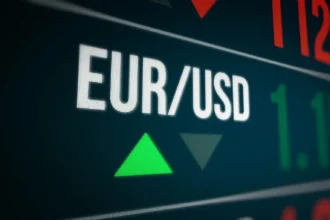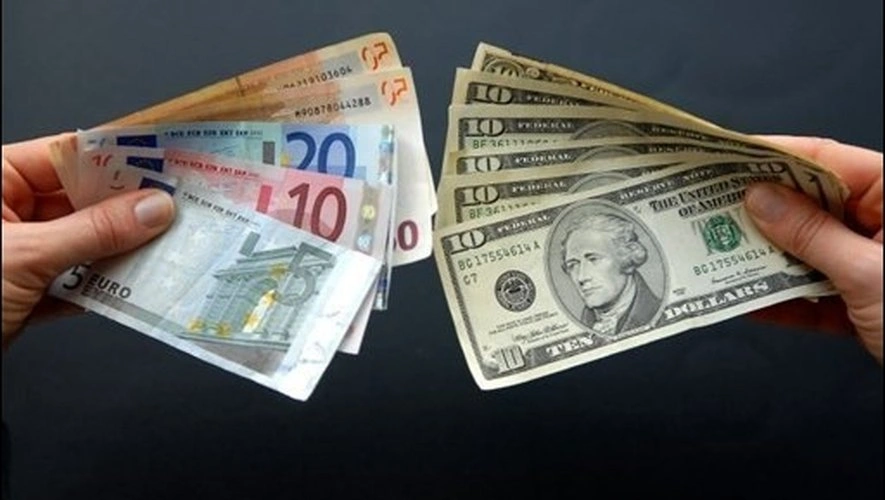The global currency markets are navigating a turbulent period as the U.S. dollar continues to weaken under the weight of tariff uncertainty stemming from the Trump administration’s shifting trade policies. Meanwhile, the euro is gaining momentum, supported by safe-haven flows and ahead of a pivotal European Central Bank (ECB) decision.
Dollar Index Near 3-Year Low Amid Trade Policy Turbulence
As of 04:45 ET (08:45 GMT), the U.S. Dollar Index (DXY), which tracks the greenback against a basket of six major currencies, slipped marginally to 99.395, lingering near a three-year low. The index has already shed over 4% this month, placing it on track for its worst monthly performance since November 2022.
This sustained weakness is largely attributed to investor concerns over erratic U.S. trade policy—a result of ongoing back-and-forth on tariffs targeting key trading partners and imported goods.
Markets Rattled by Tariff Exemptions and Policy Reversals
President Trump recently floated the possibility of exemptions on the proposed 25% tariffs on foreign vehicles, especially for North American allies such as Mexico and Canada. Earlier exemptions were granted for electronics like smartphones and laptops, primarily from China, providing slight relief to anxious markets.
Still, these inconsistent policy directions have kept investors on edge, with analysts from ING highlighting that “markets retain a substantial risk premium attached to U.S. assets, including the dollar.”
They further note that recent instability in traditional market correlations and rising FX volatility make it difficult to establish firm expectations, even suggesting the dollar could continue to underperform in the near term.
Bearish Sentiment Dominates USD Outlook
Options markets are flashing warning signs, as bearish sentiment continues to dominate investor outlooks on the dollar. Analysts suggest that even if the U.S. market has already endured the worst of trade-related dysfunction, economic damage from chaotic decision-making will take longer to resolve.
With potential economic data deterioration ahead, many traders are choosing to sell USD on rallies, anticipating further weakness.
Euro Firm Ahead of ECB Policy Decision
The euro (EUR/USD) climbed 0.1% to 1.1361, hovering just below its three-year high of 1.1474. Analysts predict a possible push towards 1.15 as the euro remains a preferred escape route from dollar-linked risk.
The ECB is scheduled to meet on Thursday, with mounting expectations of a 25-basis-point rate cut, likely bringing the deposit rate to 2.25%. This decision is partly driven by a broad downward revision in growth forecasts and a strong euro that has helped dampen inflation pressures.
“The ECB can, in the short term, focus more on growth since inflation is contained,” said Seema Shah, Chief Global Strategist at Principal Asset Management.
Despite rate cuts typically pressuring a currency, the euro continues to benefit from its relative safety status, especially as uncertainty clouds U.S. financial markets.
GBP/USD Rises on Strong Wage Growth
The British pound (GBP/USD) surged 0.4% to 1.3230, bolstered by resilient labor market data from the U.K. The unemployment rate held steady at 4.4%, while annual wage growth rose to 5.9%, exceeding forecasts.
Although the Bank of England (BoE) kept interest rates unchanged in March, the impact of U.S. tariff policies may push the BoE toward a quarter-point rate cut in May, to support domestic growth.
AUD and JPY React to Safe-Haven Flows and Central Bank Signals
In Asia, USD/JPY traded slightly lower to 142.92, with the Japanese yen nearing its six-month high as investors seek safety amid market instability.
Meanwhile, the Australian dollar (AUD/USD) climbed 0.6% to 0.6354. The Reserve Bank of Australia’s (RBA) latest meeting minutes indicated no immediate change to rates, but tariff-induced uncertainty remains a key factor in their cautious stance.
Conclusion: Risk Sentiment Keeps USD Under Pressure
With U.S. trade policy volatility continuing to shake investor confidence, the dollar remains vulnerable. As central banks like the ECB and BoE prepare to act, and investors move funds into relatively stable currencies such as the euro, pound, and yen, the forex landscape is poised for more volatility in the weeks ahead.
The coming ECB decision will likely serve as a major catalyst for euro-related pairs, while U.S. economic data will be closely watched for any signs of weakening fundamentals caused by policy uncertainty.
FAQs: Dollar Weakness & Global Currency Moves
1. Why is the U.S. dollar falling in April 2025?
The dollar is declining due to growing concerns about U.S. trade policy uncertainty, particularly around new tariffs and inconsistent policy signals from the Trump administration.
2. Will the ECB cut rates this week?
Yes, markets widely expect a 25-basis-point cut during the upcoming ECB meeting, bringing the deposit rate to 2.25%.
3. How is the euro performing in the forex market?
The euro is strong, trading close to a three-year high versus the U.S. dollar. Safe-haven flows and expectations around the ECB are supporting the currency.
4. What’s boosting the British pound?
Stronger-than-expected wage growth and stable employment data have supported the pound, despite growing concerns about U.S.-linked trade disruptions.
5. Is the Australian dollar gaining or losing value?
The AUD is gaining, thanks to stable monetary policy from the RBA and its sensitivity to global trade conditions.
6. How does U.S. trade policy affect global currencies?
Unpredictable U.S. trade measures create uncertainty in global markets, leading investors to shift away from the dollar and into more stable or better-positioned currencies.
7. What is the USD Index (DXY)?
The Dollar Index measures the value of the U.S. dollar against a basket of six major global currencies, reflecting overall USD strength or weakness.
Disclaimer
This article is for informational purposes only and does not constitute investment advice. Currency trading involves significant risk and may not be suitable for all investors. Always conduct your own research or consult a qualified financial advisor before making investment decisions.



